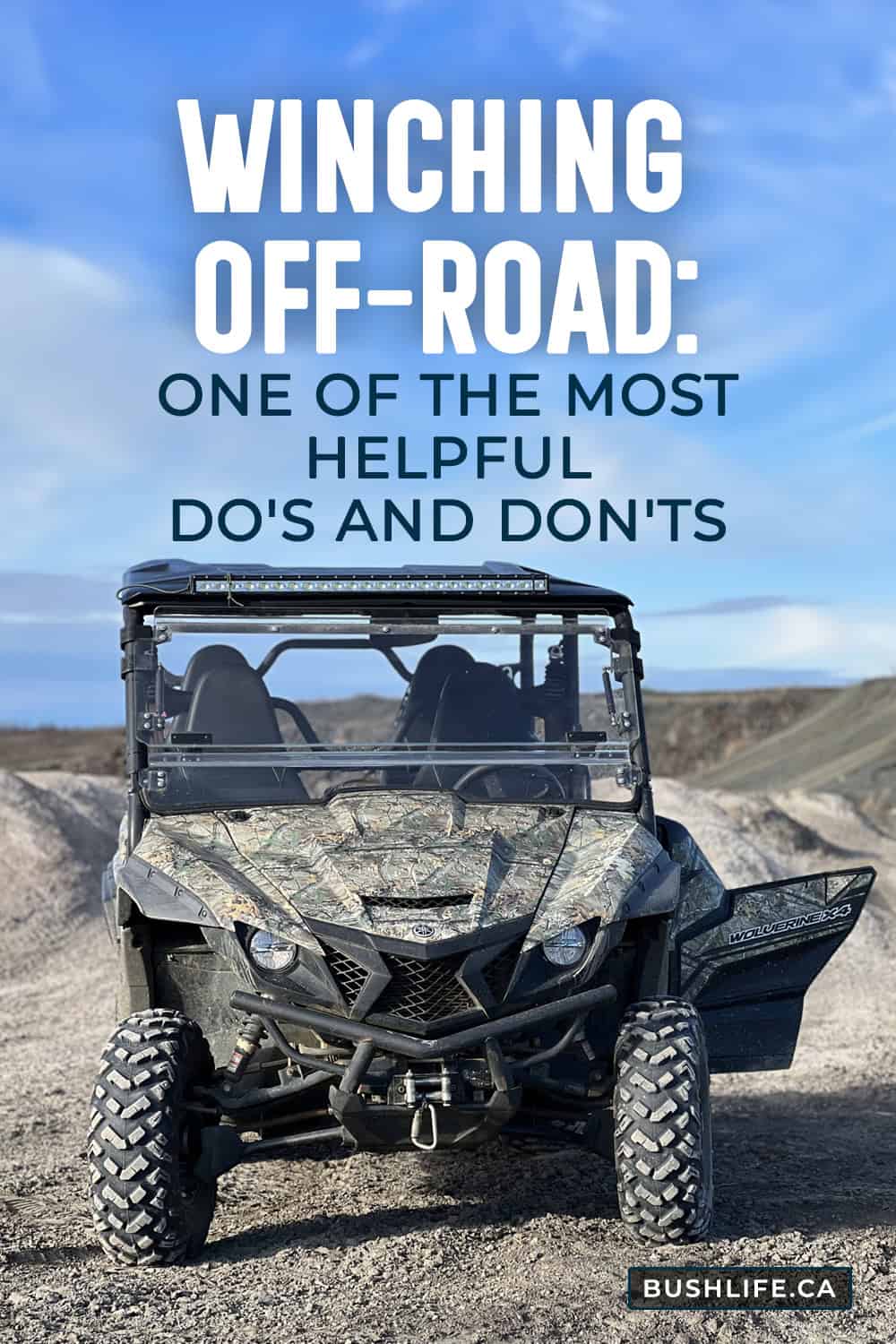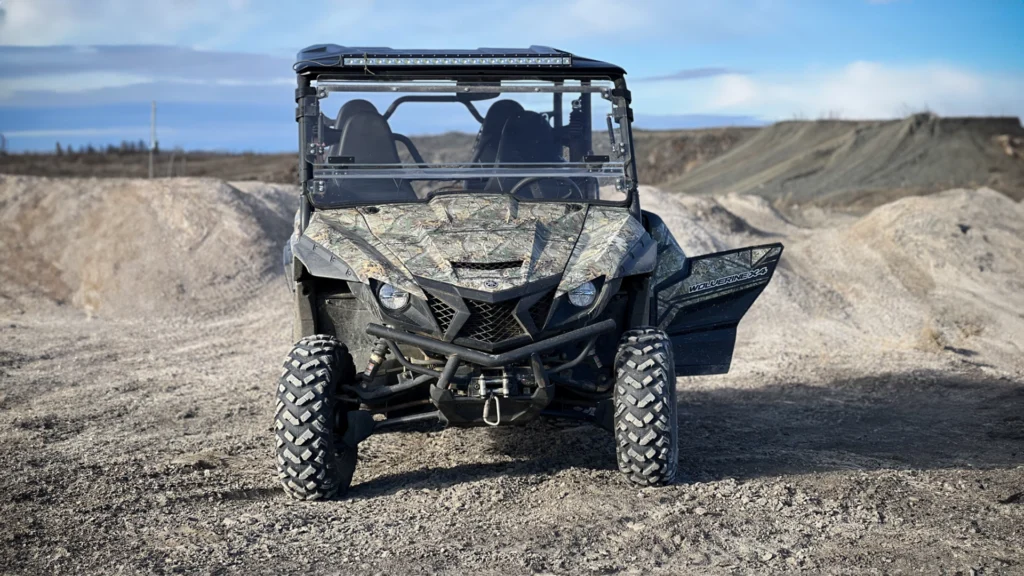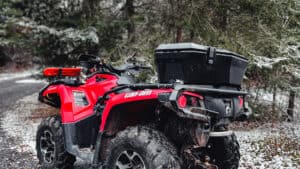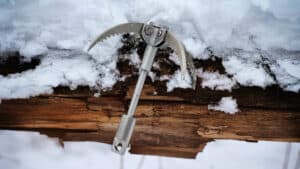Off-roading gets the adrenaline pumping, heightens the senses, and unlocks a sense of adventure that knows no limits! However, things can turn quickly for the worse when your vehicle gets stuck in mud, sand or snow. Couple that with bad weather or extreme cold, and it could now constitute an emergency. Fortunately, there is a skill that every off-roader can and should master – off-road winching. It is a lifesaving skill that can save you from scary and sticky situations. But, like any manoeuvre, winching can be dangerous if not done correctly. That’s why we’ve compiled this comprehensive guide on off-road winching dos and don’ts to help you navigate tricky trails safely and confidently.
We’ll go through what to look for when buying a winch to winching accessories and how to choose the right anchor points. You will also learn everything you need to know to avoid accidents and effectively recover your vehicle. By the end of this article, you’ll be well-equipped to handle any off-road situation.
Discloure: Posts may contain affiliate links. Purchases made through our links result in a small commission to us at no charge to you. We only recommend products that meet our brand standards based on testing and first hand use by our authors.
Understand Your Winch and Its Limitations
Before we get into winching your off-road vehicle, let’s ensure you have the correct winch. An underrated winch will not help when you are knee-deep in mud or stuck in harsh terrain. Here are some suggestions from Warn (a renowned winch brand):
It’s always better to choose a winch with a higher pulling capacity. For example, our Can-AM ATV weighs 716 lbs and is factory-outfitted with a rated 3,000 lb Warn winch made for Bombardier. That’s over 4x multiple of pulling power to vehicle weight.
Our side-by-side weighs 1,666 lbs, and the dealer fitted it with a Warn 3,500 lb winch. That’s a little over 2x multiplier. I can tell you from countless winching experiences that we have never failed to winch out of a bad situation with either vehicle. But both machines had their moments where it would barely budge. So, the bigger the winch, the better your odds of recovery.
What Happens if You Exceed the Weight Capacity?
Exceeding the weight capacity will cause the winch’s electric circuit to overload. You also risk snapping the line. Read the owner’s manual to familiarize yourself with the specifications of your winch!
What Brand of Winch Should I Buy?
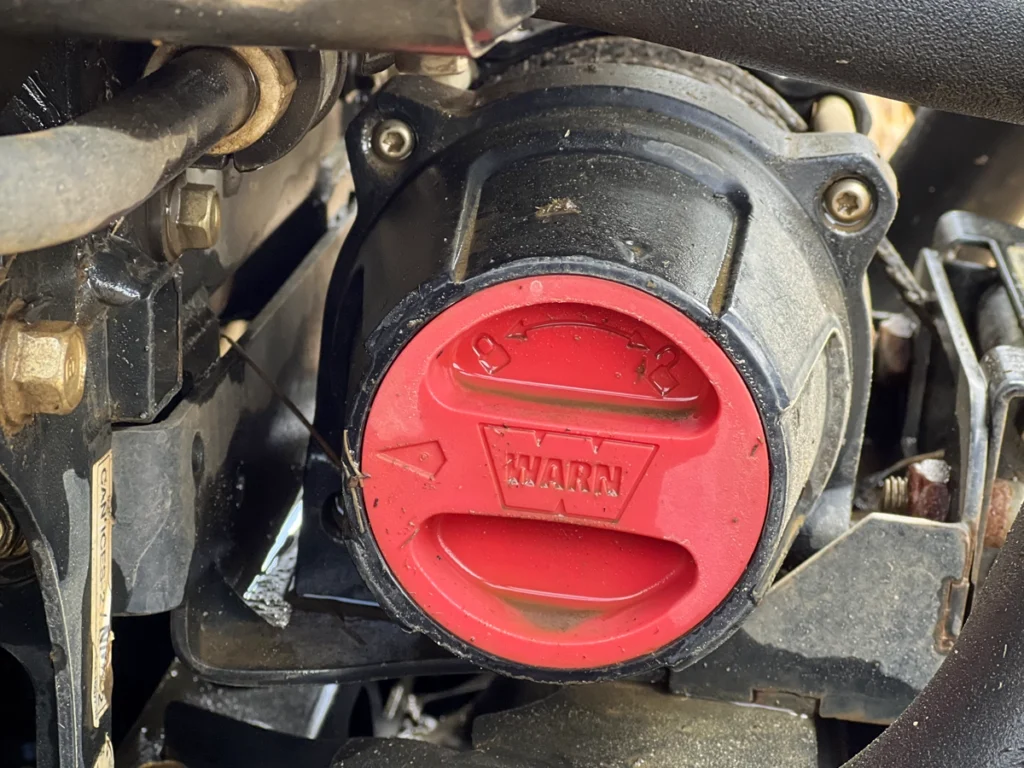
Look for reputable brands with a proven track record of producing high-quality winches. These winches will withstand the demands of winching off-road. Opting for cheap products will not only hinder recovery; it may also endanger your life.
Warn, a renowned leader in the off-roading circuit offers products you can rely on. Our ATV and SxS have Warn winches on them, which seem to be a vehicle manufacturer and dealer standard. We have had no issues with either winch after years and years of heavy use and abuse. These winches have pulled our stuck ATV from the mud, got us over rocks and steep hills, rescued snowmobiles from ditches, helped move massive logs and on and on.
What Accessories Do I Need for Off-Road Winching?

In addition to the winch itself, you’ll need various off-road accessories to make your off-road winch recovery more efficient. Here is a list of accessories that you should look into.
- Winch Line
- Winch Hooks
- Shackles
- Snatch Block: the block significantly increases the pulling power of your winch. It allows for a change in the line’s direction, doubling the pulling capacity.
- Tree Saver: this essential accessory helps protect your winch line and the anchored tree. It prevents chaffing the winch line and rubbing into the tree during the winching operation.
- Winch Damper: is a safety accessory that helps absorb the energy of the winch line should it snap or come loose during operation.
- Grappling Hook: one of our favourite and very versatile accessories. Its usefulness ranges from self-rescue to anchoring boats to mountaineering.
Further Reading: Got Stuck on the ATV? Get a Grappling Hook Now!
Inspect and Maintain Your Winch and Accessories
Get into a habit of thoroughly inspecting your winch and its accessories before using your off-road vehicle. You do not want a sticky situation to turn dire, especially being miles away from help with no one to help you.
Check your winch for signs of wear and tear, such as frayed cables or damaged hooks. Ensure the winch hook is securely attached, and inspect the fairlead for any sharp edges that could damage the winch line.
Don’t forget to look over your snatch blocks, tree savers and any other winching accessories you may have. Listen to the winch motor for any unusual sounds or vibrations, and don’t forget to check the winch’s electrical connections are secure and corrosion-free.
Further Reading: Un-Storing Your ATV: A 10 Step, How to Guide
Winch Maintenance
Remember to gently clean the winch components with mild detergent and a soft brush. Avoid using high-pressure water, as it can force water or debris into the winch motor and cause damage.
Grease the winch drum and gears periodically to maintain smooth operation. Use a high-quality, lithium-based grease compatible with your winch’s components. Doing so will help reduce friction and extend the lifespan of your winch.
Lastly, don’t forget to occasionally use the winch, even if you don’t have to! Our side-by-side winch will often bugger up if not used. It’s not even the winch that’s the issue – it’s the relay, and flicking it a few times gets it going. Like all mechanical things, keeping it working from time to time avoids a lot of problems. The last thing you want when you are stuck is to have to fix your winch first.
The Dos of Off-Road Winching
With the correct winch and off-road winching equipment, we can now look at the essential steps and techniques you should follow to ensure a successful winching operation.
The Don’ts of Off-Road Winching
While knowing what to do is essential, it’s equally important to know what not to do when it comes to off-road winching recovery. These common mistakes can lead to accidents, damage to your vehicle, or even personal injury or death.
Steel Versus Synthetic Cable
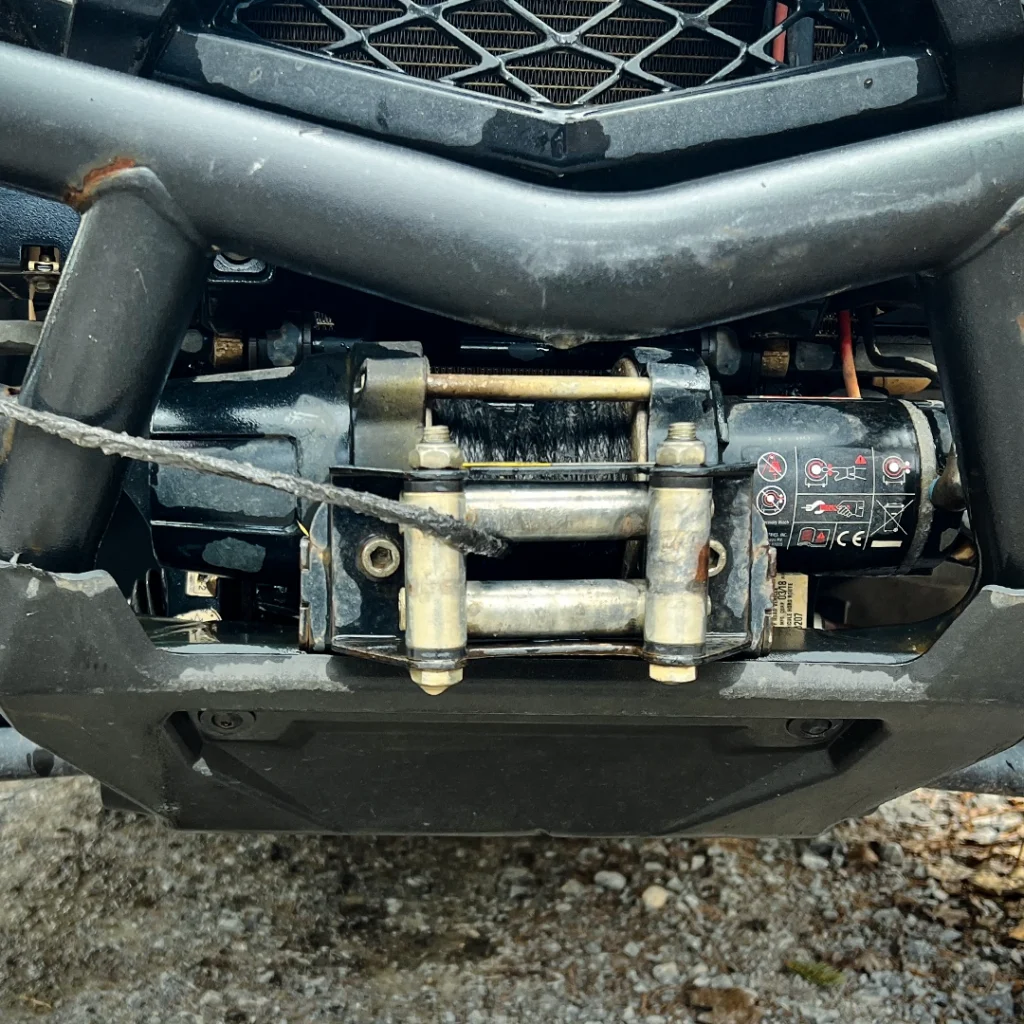
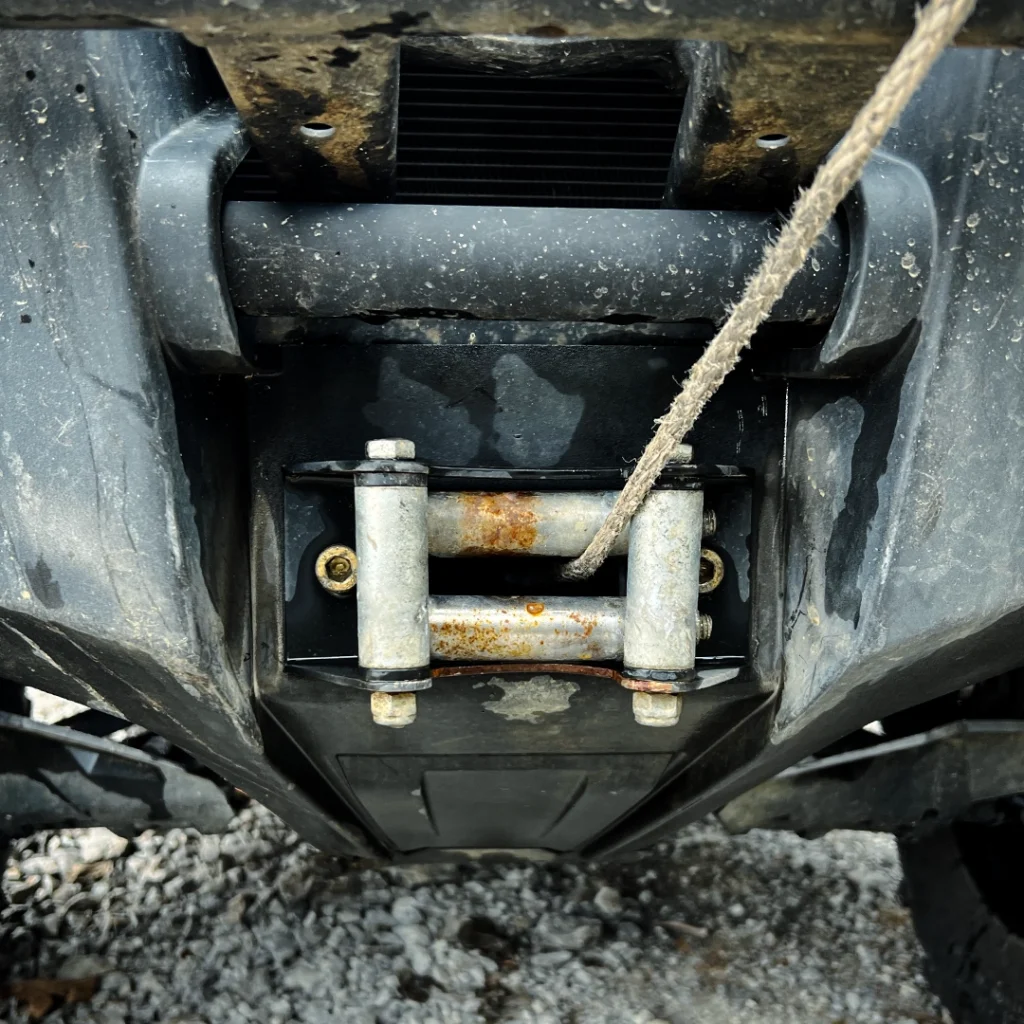
We don’t like steel cable. In fact, we despise it!!! First of all, steel cable will tension up and be far deadlier in case of a line breakage under tension.
The big issue is that all cables eventually wear and break. As steel cable wears, it frays and destroys your hands, making it harder to work with. Add in some rust, and now it’s also very messy. When the cable does break, you may need to cut and clamp it. Cutting the cable is not the easiest thing to do. Repairing a steel winch cable is time-consuming and requires parts and tools. Neither of which is fun to do in the bush.
Synthetic cable is soft and super easy to work with. When the line snaps, it’s a matter of tying a new knot onto your winch hook. No different than working with rope, repairs take only minutes.
Converting to Synthetic Cable
If you buy a winch with a synthetic cable, life is good and future replacements are simple. Converting from steel to synthetic for the above reasons requires an extra step. The steel cable will have likely damaged the winch’s fairleads – which in turn will shred and destroy your shiny and expensive new synthetic cable. Be sure to inspect and replace your fairleads if damaged on the conversion.
Be Prepared for the Worst-Case Scenario
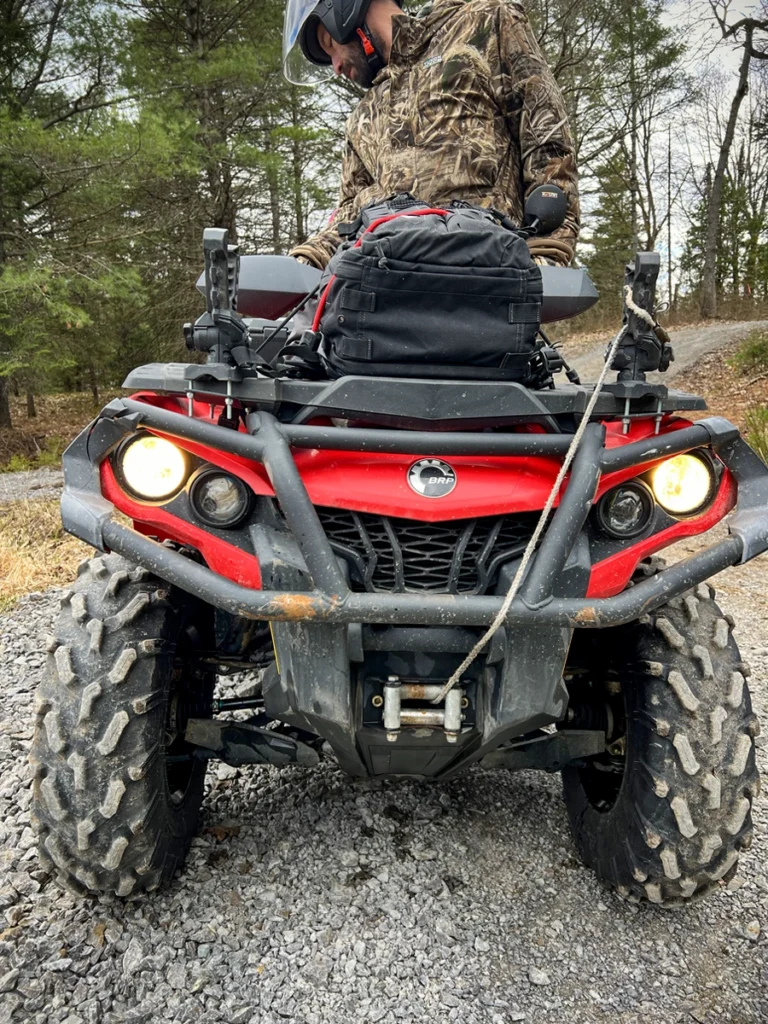
As an off-roader, whether you’re recovering your vehicle, helping others or removing an obstacle, you must be prepared for everything and anything. It doesn’t take much for something to go wrong. The last thing you want is to be miles away with no plan or supplies.
In addition to your winching and winching accessories, be smart and carry an emergency get-home bag and recovery kit with you. Your kit should include a first aid kit, tourniquet, water, food, multi-tool, light, compass, battery pack, leather gloves, saw, fire starter kit and ATV/UTV spare parts. Know how to use, install and operate your gear and parts.
Lastly, always have a backup plan. Sometimes, winching alone won’t be enough to get your vehicle unstuck. Our ATV is equipped with Kemimoto’s cargo box, which is a cost-effective alternative to Can-Am’s and has been a godsend in housing all the extra gear. Within this storage box consider carrying additional recovery gear, such as a high-lift jack or traction mats. Better yet, never go off-roading alone – always bring a buddy who can help you in an emergency.
Further Reading: Can-Am Storage Box: Energize Your ATV With More Space!
Conclusion: Mastering Off-Road Winching for a Successful Adventure
In conclusion, off-road winching is a critical skill that you should master. We cannot stress enough the importance of off-roading with a buddy, but if you ever find yourself alone and stuck, you’ll be glad you learned how to winch yourself out of any situation. This becomes especially vital on quiet trails where help is hard to come by.
By following the dos and don’ts outlined in this guide and investing in quality equipment, you can safely and confidently navigate the most challenging trails. Don’t forget to inspect and maintain your winch and accessories and know your winch’s limitations to avoid accidents. With the right equipment and knowledge, you can continue to enjoy the thrill of off-roading while staying safe and prepared.
I hope you found this guide helpful. Please consider sharing it. Thank you!
Bookmark this post on Pinterest for future reference!
